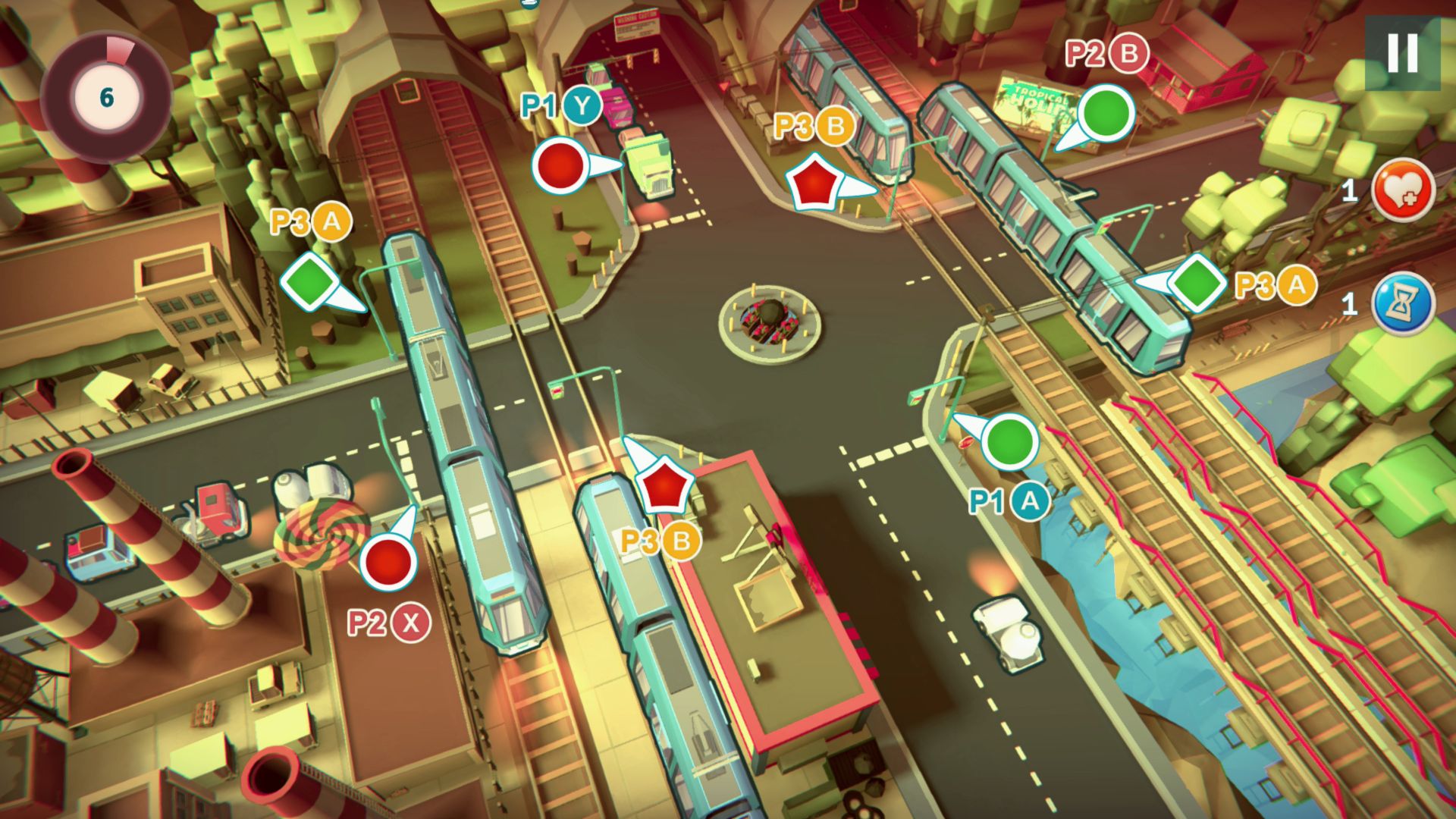Many real-world tasks and careers have provided inspiration for video games over the years. However, rather than taking the dry simulation approach as many of their contemporaries would, Polish developer Baltoro made a cooperative puzzle game instead. Urban Flow, the traffic management game, first debuted on Switch, then Xbox, and finally PlayStation and Steam just this summer. Urban Flow’s core gameplay is extremely simple and approachable, yet the developers weave a surprising level of depth and challenge into its 100-plus levels.
In Urban Flow, players must manage the traffic lights of bustling city intersections. Each traffic light is mapped to a button on the controller, though some levels map multiple lights to a single button. The goal in each level is to safely allow a certain number of cars to travel through the level’s intersections and off the screen. If any collisions occur, players lose a life power-up. Lives take a little while to charge up, so two collisions in quick succession will end the level.
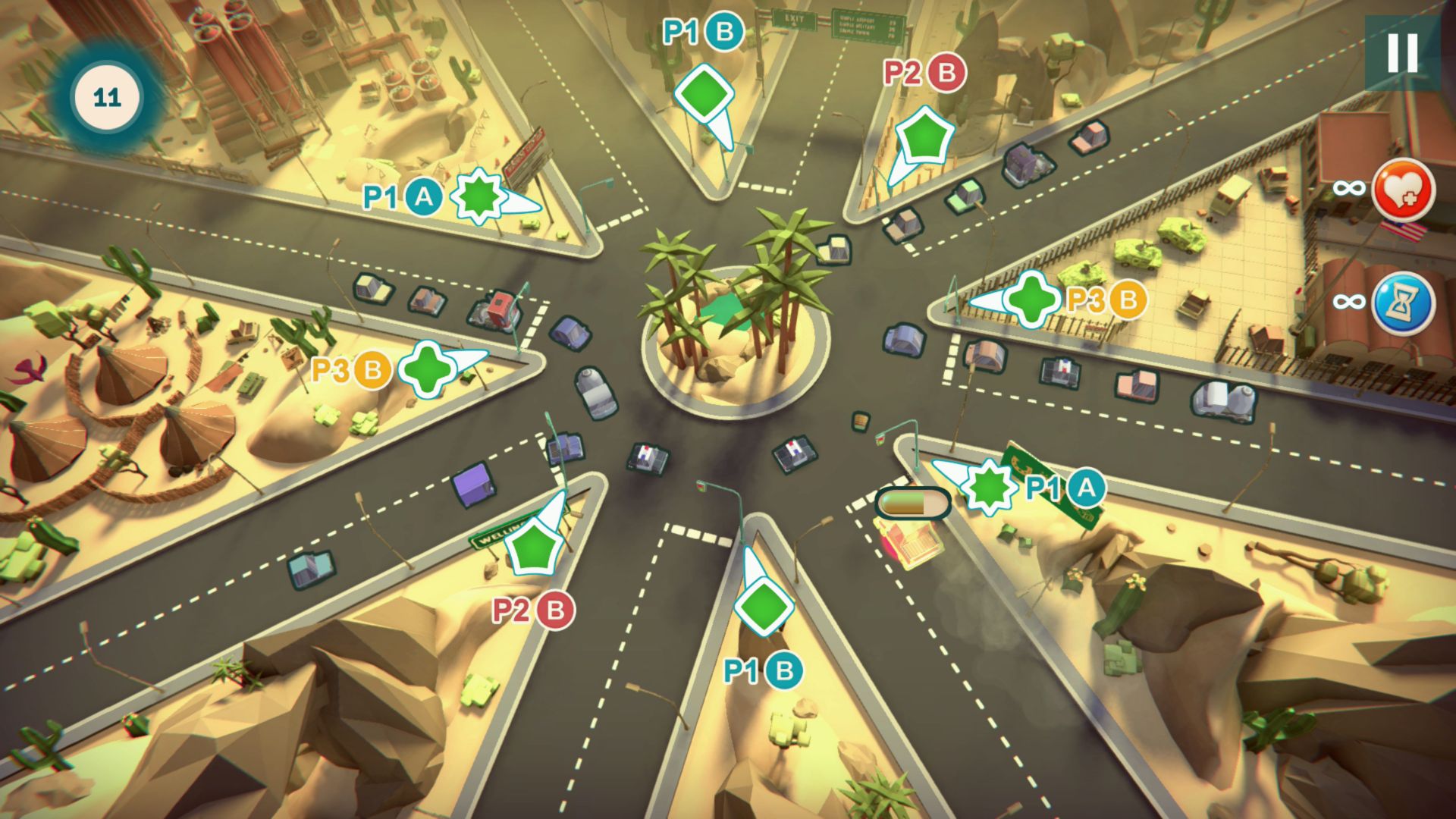
A big part of the challenge comes from the fact that vehicles won’t wait forever at a red light. After a car has waited for a while, a warning timer appears around the vehicle. If you don’t let the car through before the timer fills, that car and any vehicles behind it will drive through the intersection on their own. Thus, it’s important to let cars through each intersection regularly, lest someone run the light and cause a wreck.
As the game progresses, new mechanics throw wrinkles into the system. Some vehicles have their own rules: ambulances must be allowed to leave the screen before their patients die; tanks don’t wait at lights and will simply barrel forward, destroying any cars in their way; trash trucks drop trash that will cause wrecks unless cleared by wiggling the analog stick, etc. Other hazards include drawbridges that raise and lower on their own, weather that fogs up the camera (which must be wiped), camera feeds that go staticky at random intervals, and more.
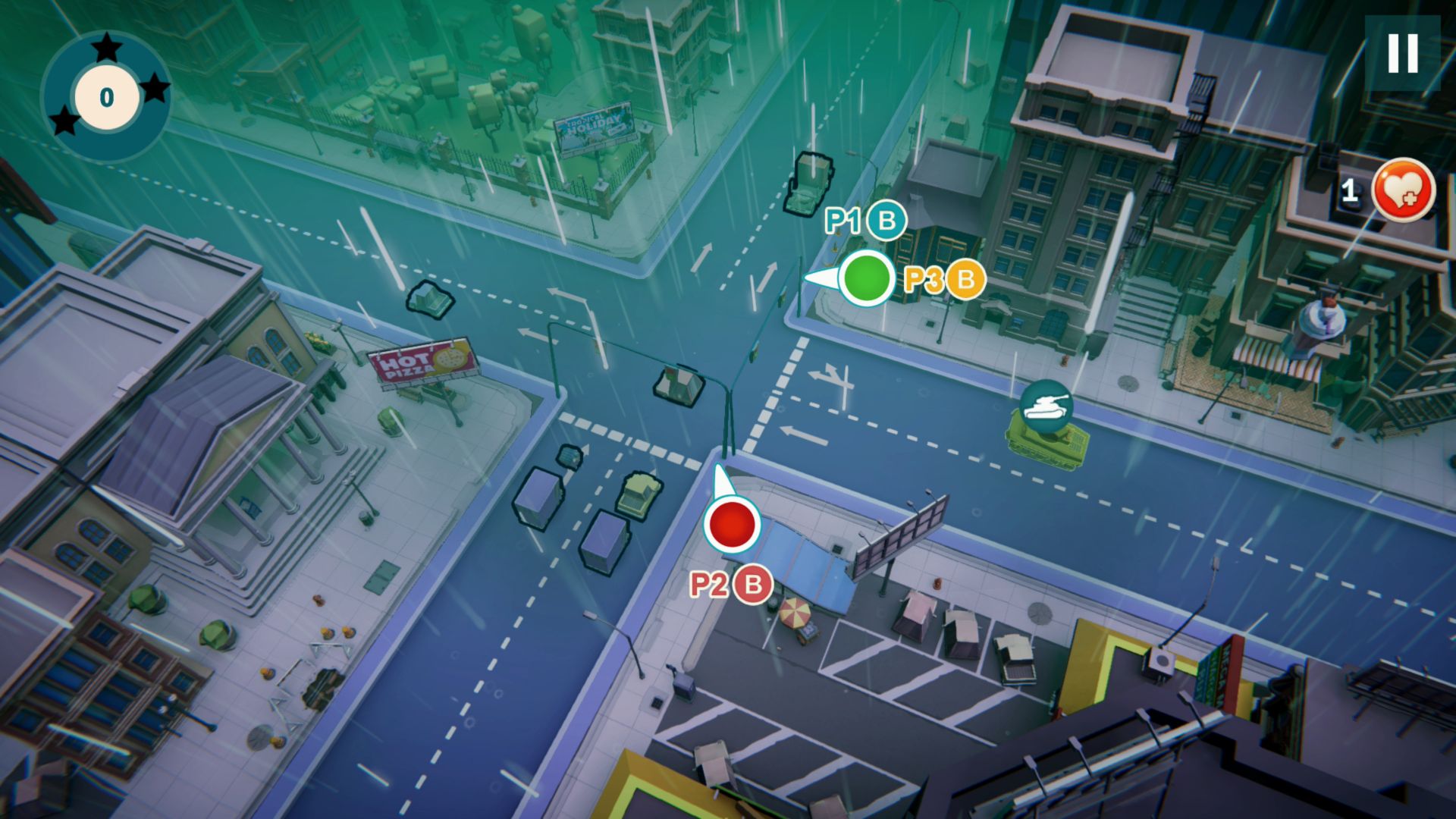
When playing single-player, you'll manage every light independently. That’s probably the best way to play the game, but co-op is also an option. Up to four local players can work together on any level. If the level has four or more independently controlled traffic lights, then all players will control their own unique lights. However, some levels only have two or three lights. When this happens, multiple players will share control of a single light; anyone mapped to a light can turn it on or off. That’s not ideal at all, so someone will probably want to sit the level out in those instances. Urban Flow does have larger levels that would be great for four players – Endless mode is well-suited to it. For Campaign co-op, two players work best. Both players can coordinate and focus their attention on their own intersections, which ends up being pretty fun.
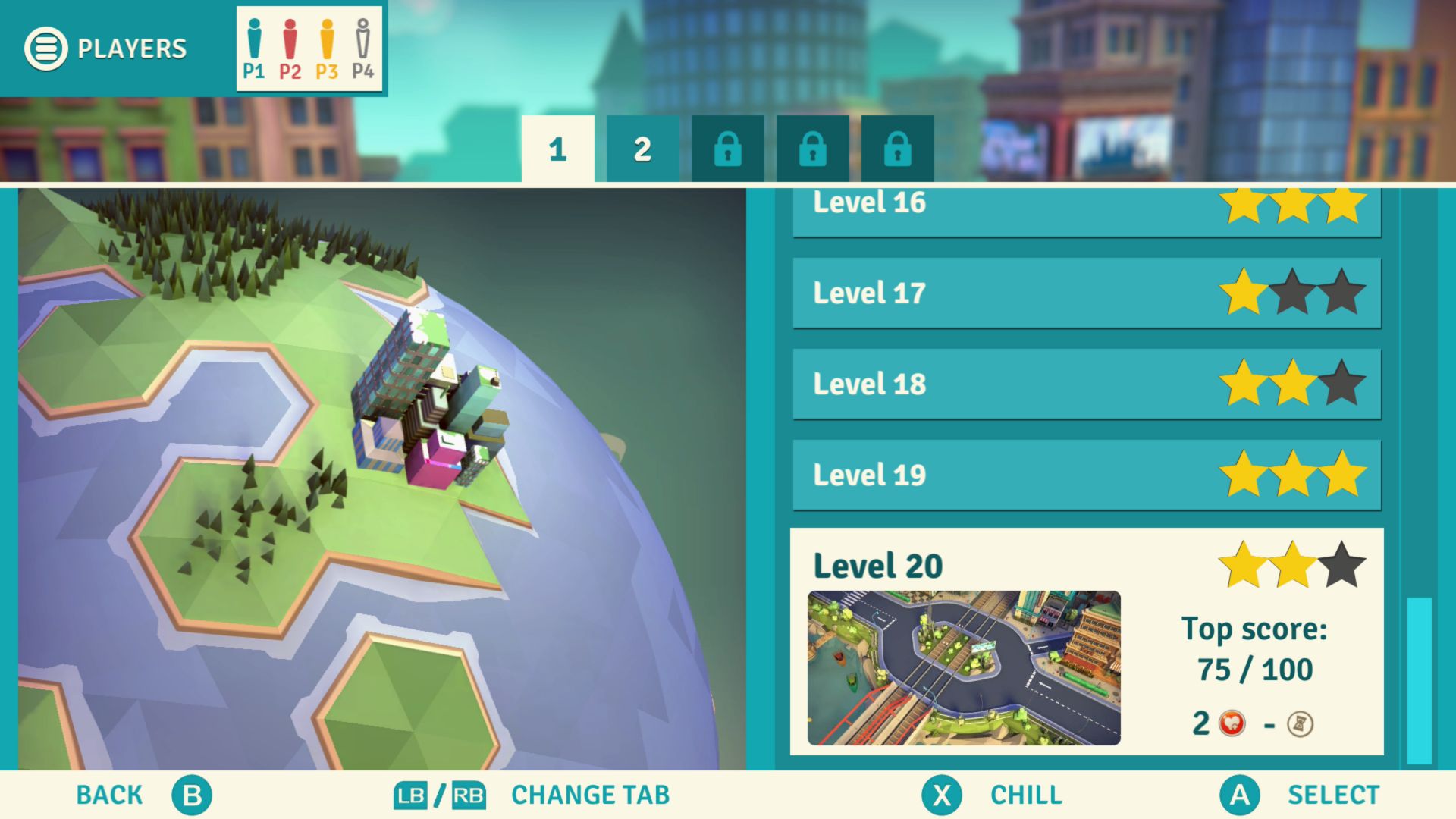
Campaign mode is the meat of the game, offering five sets of 20 levels to work through. Every level has three stars to earn based on how many cars survive before players run out of lives. These stars contribute to Achievements/Trophies and the main player’s overall Traffic Rank, viewable from the main menu. Hitting Traffic Rank milestones will unlock 3D models and songs in the game’s Gallery, though neither type of prize is very enticing.
Urban Flow has a few additional modes as well. Endless features a total of 10 large, unlockable levels that can be played until a collision happens – basically, a traditional survival mode. There are also three extra-hard sets of levels found under the Special Levels category. Note that the Special Levels are sold as DLC on Switch but included with the base game in other versions. With the Special levels, players must clear each level sequentially in order to unlock the next one. I’d save the special levels for post-game content since they’re so difficult.
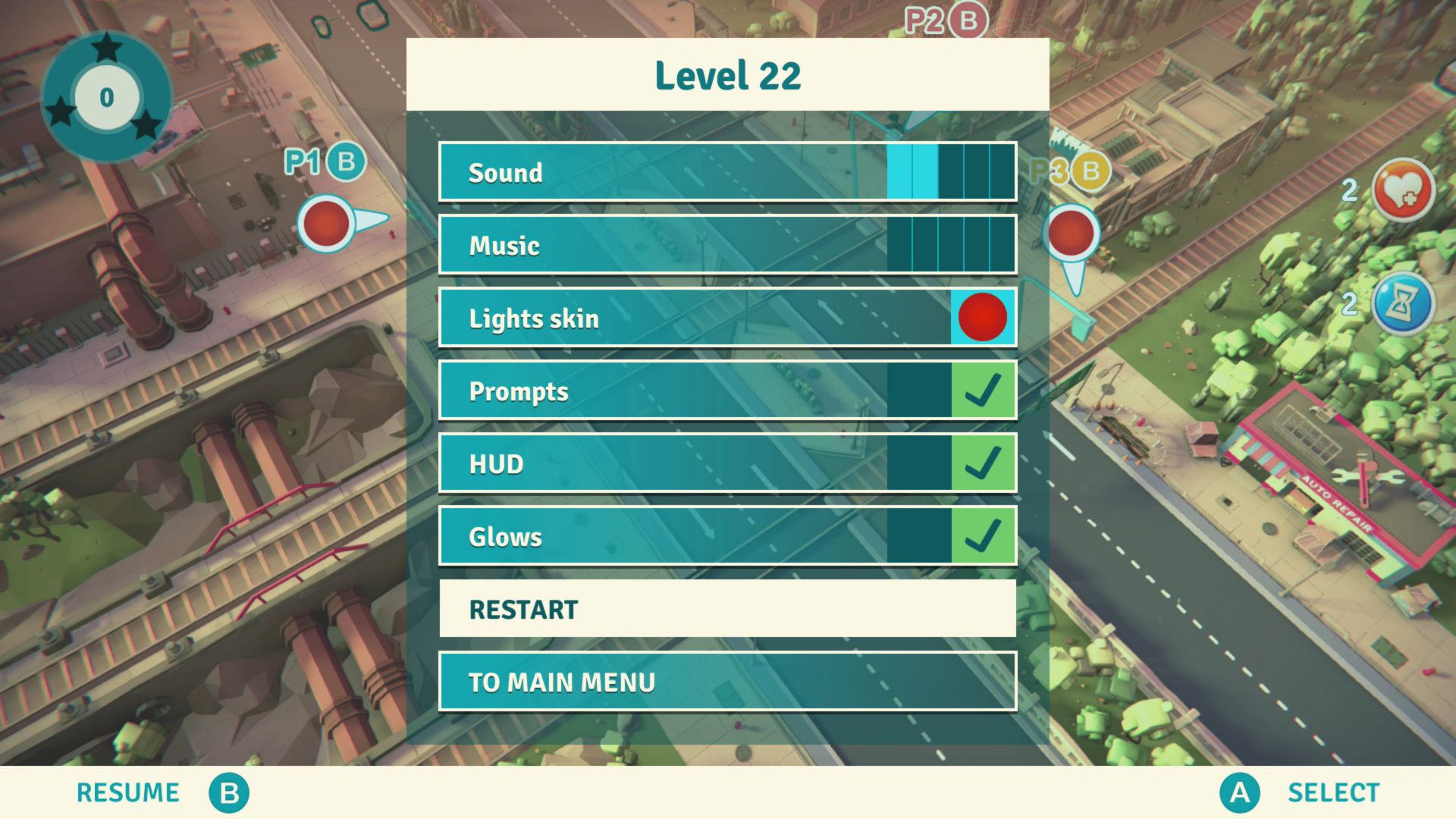
While Urban Flow is a very good puzzle game, two issues hamper the experience. First, restarting levels is oddly cumbersome. To restart a level, the player must pause and then make a total of 7 button presses to reach and select the restart option. That’s way too many! Why isn’t there a dedicated restart button on the pause menu? If you’re trying to 3-star levels, you’ll have to restart a lot, so this UI issue wastes a lot of time and effort in the long run. The other big problem is the soundtrack. It’s mostly discordant, sedate, and annoying. I don’t usually turn off a game’s music, but I had to with this game. You know a developer's not very proud of the music when they don't even list the composer in the game's credits.
Traffic management might not sound very exciting, but Urban Flow manages to make it fun by boiling things down to their simplest forms rather than trying to simulate the drudgery of the experience. The gameplay is simple to learn, but levels are tough to perfect – perfect ingredients for a puzzle game. The short length of the levels makes Urban Flow especially well suited to portable play. Along the same lines, I enjoyed solo play the most, but it’s always nice to have the option of bringing in a partner for some chaotic cooperation. If you’re looking for a non-traditional puzzle game, be sure to give this one the green light.
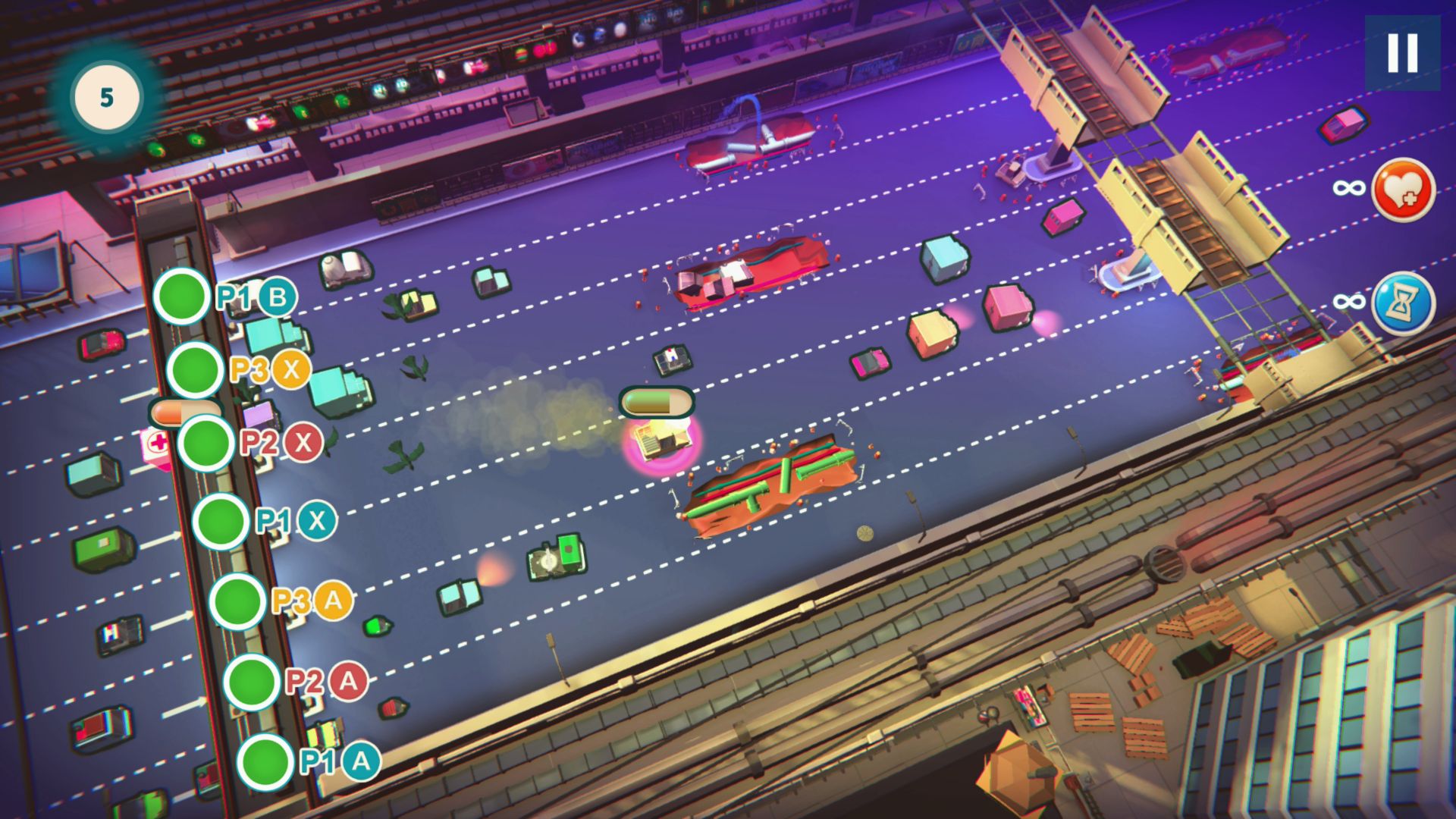
Urban Flow sells for $12.99 on Xbox and $5.99 on PlayStation and Steam. The Steam version is fully Steam Deck compatible. The Switch version comes in numerous digital bundles. If you’re going the Switch route, grab whichever bundle is currently on sale. Oh, and the Xbox version is available in a bundle with Knights & Guns for $7.99 – an excellent value.
Xbox, Switch, and Steam codes were provided by the publisher for this review.
Verdict
Co-Op Score
Overall
The Co-Op Experience: Play by yourself or with your friends in scalable “drop-in, drop-out” local co-op mode for two, three, or four players! If a level has at least as many traffic lights as there are players, then every player will control their own light(s). When a level has less lights than the total number of players, two players will share control of the same light. Lives and power-ups are shared between all players.
Co-Optimus game reviews focus on the cooperative experience of a game, our final score graphic represents this experience along with an average score for the game overall. For an explanation of our scores please check our Review Score Explanation Guide.
